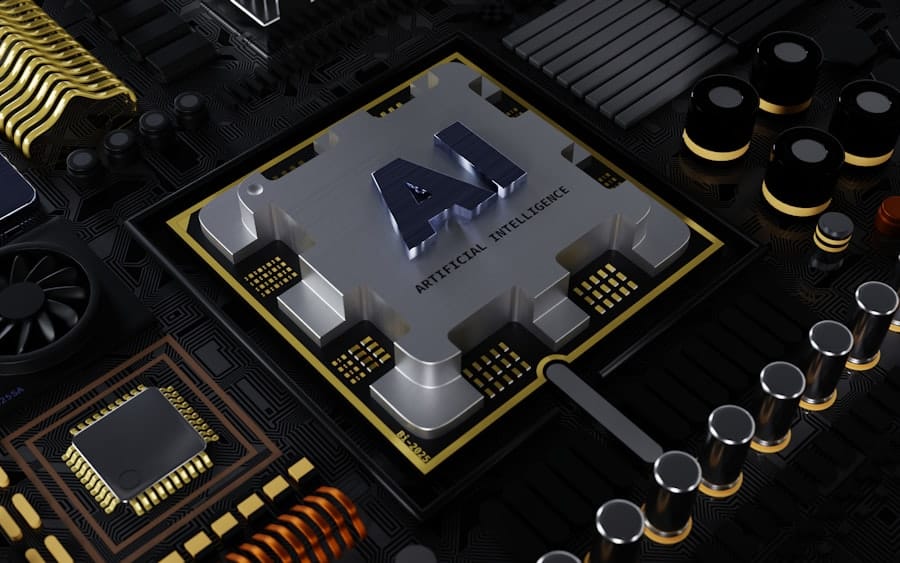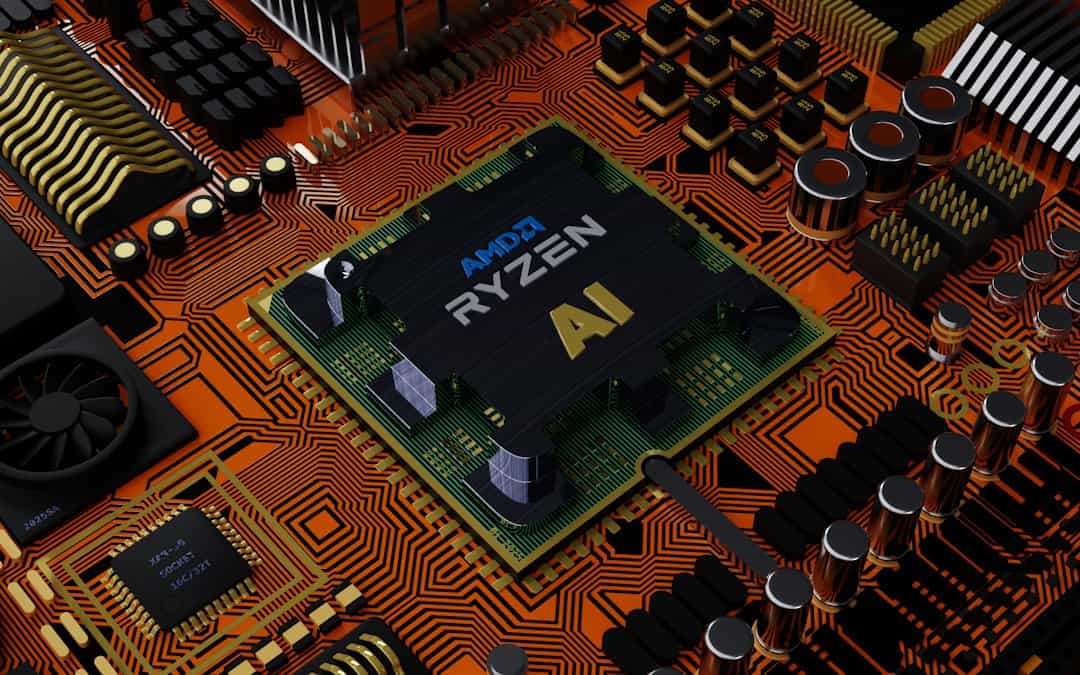Deep learning is a subset of machine learning, which in turn is a subset of artificial intelligence (AI). It utilizes algorithms to model and interpret complex data, often employing multiple layers of neural networks. These neural networks are inspired by the human brain’s structure and are designed to identify patterns and make decisions based on input data.
Deep Learning has gained prominence in recent years due to its capacity to process and learn from large volumes of data in a manner similar to human learning. Deep learning plays a vital role in AI by enabling machines to perform tasks that typically require human intelligence. These tasks include image and speech recognition, natural language processing, and strategic game-playing such as chess and Go.
Deep learning algorithms can analyze and interpret data in ways previously thought impossible for machines. Consequently, they have the potential to revolutionize numerous industries, including healthcare, finance, transportation, and entertainment. Understanding the role of deep learning in AI allows us to appreciate its potential to transform various aspects of our lives and work.
Key Takeaways
- Deep learning is a subset of machine learning that uses neural networks to mimic the human brain’s ability to learn and make decisions.
- Deep learning algorithms have evolved from simple neural networks to more complex models like convolutional neural networks (CNN) and recurrent neural networks (RNN).
- Deep learning is used in various applications such as image and speech recognition, natural language processing, and autonomous vehicles.
- Deep learning networks consist of multiple layers of interconnected nodes that process and analyze data to make predictions or decisions.
- Challenges in deep learning for AI include the need for large amounts of labeled data, interpretability of models, and ethical considerations such as bias and privacy concerns.
The Evolution of Deep Learning Algorithms
The evolution of deep learning algorithms can be traced back to the 1940s when the first artificial neural network was created. However, it wasn’t until the 1980s that significant progress was made in training these networks, thanks to the development of the backpropagation algorithm. This algorithm allowed for more efficient training of neural networks by adjusting the weights of connections between neurons based on the error in their predictions.
In the 2000s, the availability of large datasets and powerful computational resources led to a resurgence of interest in deep learning, culminating in the development of deep convolutional neural networks (CNNs) for image recognition tasks. More recently, the introduction of recurrent neural networks (RNNs) and long short-term memory (LSTM) networks has enabled deep learning algorithms to process sequential data, such as natural language and time series data. The evolution of deep learning algorithms has also been driven by advancements in hardware, such as graphical processing units (GPUs) and specialized hardware like Google’s Tensor Processing Units (TPUs), which have accelerated the training and inference of deep learning models.
As a result, deep learning algorithms have become increasingly powerful and versatile, paving the way for their widespread adoption in AI applications.
Exploring the Applications of Deep Learning in AI

The applications of deep learning in AI are vast and diverse, spanning across various industries and domains. In healthcare, deep learning algorithms are being used for medical image analysis, disease diagnosis, drug discovery, and personalized medicine. In finance, they are used for fraud detection, risk assessment, algorithmic trading, and customer service chatbots.
In transportation, they are used for autonomous vehicles, traffic management, and predictive maintenance of infrastructure. In entertainment, they are used for content recommendation, personalized advertising, and virtual assistants. Deep learning is also revolutionizing the field of natural language processing (NLP), enabling machines to understand and generate human language with unprecedented accuracy and fluency.
This has led to the development of virtual assistants like Siri, Alexa, and Google Assistant, as well as language translation services like Google Translate. In addition, deep learning is being applied to social media analysis, sentiment analysis, and recommendation systems to personalize user experiences and improve engagement. By exploring the applications of deep learning in AI, we can see how it is reshaping our world and creating new opportunities for innovation.
Unraveling the Inner Workings of Deep Learning Networks
| Layer Type | Number of Layers | Activation Function | Output Size |
|---|---|---|---|
| Input | 1 | N/A | 784 |
| Dense | 2 | ReLU | 128 |
| Dense | 1 | Softmax | 10 |
The inner workings of deep learning networks can be complex and difficult to understand, but at their core, they rely on the principles of neural network architecture and training. A typical deep learning network consists of multiple layers of interconnected neurons, each layer performing a specific function such as feature extraction or decision making. The input data is fed into the network, processed through these layers, and eventually produces an output that represents the model’s prediction or decision.
During training, the network learns to make accurate predictions by adjusting the weights of connections between neurons based on the error in its predictions. This process is repeated iteratively using a technique called gradient descent, which aims to minimize the error by finding the optimal set of weights for the network. The training process is often computationally intensive and requires large amounts of labeled data to ensure that the network learns to generalize well to new, unseen data.
Unraveling the inner workings of deep learning networks can provide insights into how they learn from data and make decisions, shedding light on their capabilities and limitations.
Overcoming Challenges in Deep Learning for AI
Despite its potential, deep learning for AI faces several challenges that need to be overcome for its widespread adoption and success. One major challenge is the need for large amounts of labeled data for training deep learning models. This can be costly and time-consuming to obtain, especially for tasks that require specialized expertise or domain knowledge.
Another challenge is the interpretability of deep learning models, as they often function as black boxes that make it difficult to understand how they arrive at their decisions. Additionally, deep learning models are susceptible to adversarial attacks, where small perturbations to input data can cause them to make incorrect predictions. This poses a security risk in applications such as autonomous vehicles and medical diagnosis.
Furthermore, deep learning models can be computationally intensive and require specialized hardware for training and inference, which may limit their accessibility to smaller organizations and developing countries. Overcoming these challenges in deep learning for AI will require interdisciplinary collaboration across fields such as computer science, statistics, psychology, and ethics.
The Future of Deep Learning and its Impact on AI

The future of deep learning holds great promise for advancing AI capabilities and transforming industries. As deep learning algorithms continue to evolve, we can expect them to become more efficient, robust, and versatile in handling a wide range of tasks. This will enable AI systems to perform complex cognitive tasks with human-like accuracy and efficiency, opening up new possibilities for automation and augmentation of human labor.
In addition, the integration of deep learning with other AI techniques such as reinforcement learning and unsupervised learning will further expand its capabilities in areas such as robotics, autonomous systems, and creative applications. The impact of deep learning on AI will also extend to societal issues such as healthcare accessibility, environmental sustainability, and economic inequality. By harnessing the power of deep learning for AI, we can address some of the most pressing challenges facing humanity and create a more equitable and sustainable future.
Ethical Considerations in Deep Learning and AI Development
As deep learning continues to advance, it is important to consider the ethical implications of its applications in AI development. One key ethical consideration is the potential for bias in deep learning models, which can lead to unfair treatment or discrimination against certain groups of people. This bias can arise from biased training data or algorithmic decisions that reflect societal prejudices.
Addressing this issue requires careful curation of training data and transparency in algorithmic decision-making processes. Another ethical consideration is the impact of deep learning on employment and labor markets. As AI systems powered by deep learning become more capable of performing human tasks, there is a risk of job displacement and economic disruption for workers in various industries.
It is crucial to develop policies and programs that support workers through reskilling and upskilling initiatives to adapt to the changing nature of work. Furthermore, there are ethical concerns surrounding privacy and data security in the context of deep learning applications. As AI systems collect and analyze vast amounts of personal data, there is a need to ensure that individuals’ privacy rights are protected and that their data is used responsibly and transparently.
In conclusion, understanding deep learning and its role in AI provides insights into its potential to revolutionize various industries and domains. The evolution of deep learning algorithms has led to their widespread adoption in AI applications, with diverse uses ranging from healthcare and finance to transportation and entertainment. Unraveling the inner workings of deep learning networks sheds light on their capabilities and limitations, while overcoming challenges in deep learning for AI requires interdisciplinary collaboration across fields such as computer science, statistics, psychology, and ethics.
The future of deep learning holds great promise for advancing AI capabilities and transforming industries by enabling AI systems to perform complex cognitive tasks with human-like accuracy and efficiency. However, it is important to consider ethical considerations in deep learning and AI development, such as bias in models, impact on employment, privacy concerns, and data security. By addressing these ethical considerations proactively, we can ensure that deep learning continues to benefit society while minimizing potential harms.
If you’re interested in understanding deep learning, you may also want to check out this article on the resources and further reading section of Metaversum. This article provides information on conferences and events related to deep learning, which can be a great way to further your understanding of this complex topic.
FAQs
What is deep learning?
Deep learning is a subset of machine learning, which in turn is a subset of artificial intelligence. It involves training artificial neural networks to learn and make decisions from data.
How does deep learning work?
Deep learning algorithms use multiple layers of interconnected nodes, or artificial neurons, to process and learn from data. These networks are trained using large amounts of labeled data to make predictions or decisions.
What are some applications of deep learning?
Deep learning is used in a wide range of applications, including image and speech recognition, natural language processing, autonomous vehicles, medical diagnosis, and financial forecasting.
What are the advantages of deep learning?
Deep learning can automatically learn features from data, handle large and complex datasets, and often outperform traditional machine learning algorithms in tasks such as image and speech recognition.
What are the limitations of deep learning?
Deep learning requires large amounts of labeled data for training, and the resulting models can be complex and difficult to interpret. It also requires significant computational resources for training and inference.
What are some popular deep learning frameworks?
Popular deep learning frameworks include TensorFlow, PyTorch, Keras, and Caffe. These frameworks provide tools and libraries for building and training deep learning models.











Leave a Reply